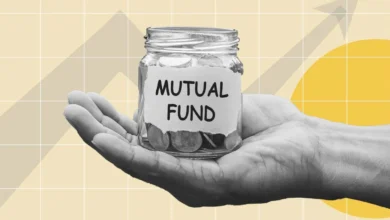Bonds: How They Work and How To Invest

Bonds are one of the basic building blocks of the financial world, giving investors a way to earn regular income bricks while diversifying their portfolios. Whether you are new to investing or looking to deepen your understanding, this guide will take you through how bonds work, the different types of bonds available, and how to invest in them.
What Is a Bond?
At the heart of every bond is a debt security. When you buy a bond, you’re essentially loaning money to an issuer, whether that’s a corporation, government or other entity. In exchange for your investment, the issuer promises to pay you interest on a regular basis and to return the principal balance (or face value) of the bond when it matures.
Key Components of a Bond:
- Face Value (Par Value): The value of the bond at maturity and the reference amount used when calculating interest payments.
- Coupon Rate: The interest rate that the issuer pays to the bondholder, often stated as an annual percentage of the bond’s face value.
- Maturity Date: The date in the future when the principal amount of the bond is repaid.
- Issuer: The one borrowing the money, which can be a government, municipality or corporation.
Types of Bonds
Here are some different types of bonds that you should understand before investing:
1. Government Bonds
They’re low-risk because they are issued by national governments. Examples in the U.S. include:
- Treasury Bonds (T-Bonds): These are long-term securities with maturities from 10 to 30 years.
- Treasury Inflation-Protected Securities (TIPS): These are bonds that are indexed to inflation, so the value of your investment stays the same in terms of purchasing power.
Example from Real Life: The U.S. Department of the Treasury frequently issues T-Bonds with different maturities. In March 2025, for example, the coupon rate for a 30-year T-Bond was 4.5% given interest rate conditions at that time.
2. Municipal Bonds (Munis)
Munis “are often tax-exempt, which makes them attractive to investors in higher tax brackets,” he said. They are used to finance public projects: schools, highways, hospitals.
Reallife mock example — City of Los Angeles in April 2025 issued a $500 million municipal bond to fund a new public transportation system.
3. Corporate Bonds
Issued by companies to raise capital for various purposes. These bonds typically yield more than their government counterparts at a higher risk of default based on the issuing company’s creditworthiness.
For instance, in February 2025, Apple Inc. issued a 10-year corporate bond with a coupon rate of 3.75%, which indicates the company’s AA credit quality.
4. High-Yield Bonds (Junk Bonds)
Bonds rated at below investment-grade, paying higher interest rates in exchange for greater risk.
Actual Example: In January 2025, Tesla issued a high-yield bond with a coupon rate of 6.5%, which is quite high considering the credit rating of the company in contrast to bigger car manufacturers.
5. Green Bonds
Debt securities used to finance projects with positive environmental impacts such as renewable energy projects and pollution containment efforts.
Example from real life: The State of New York issued a $200 million green bond to help develop solar energy farms in March 2025.
How to Invest in Bonds
There are several ways to buy bonds:
Direct Purchase
-
TreasuryDirect: For U.S. Treasury securities.
-
Brokerage Accounts: Many online brokers offer a platform to purchase various bonds.
Bond Funds and ETFs
For diversification, there are bond mutual funds or exchange-traded funds (ETFs). These funds aggregate capital from several investors to buy a wide variety of bonds, diversifying risk and offering exposure to different sectors and maturities.
Analyzing Bonds
Before investing, it is important to consider the bond’s prospects:
- Credit Rating: The ratings assigned by agencies such as Moody’s, S&P and Fitch that assess the credit risk of a bond.
- Yield-to-Maturity (YTM ): The yield (return) expected on a bond if it is held until maturity, taking into account both interest payments and any capital gain or loss.
- Duration: The longer the duration, the more sensitive a bond is to changes in interest rates.
Bond Investment Strategies
To make the most of your bond investments:
- Laddering: Spread your investment across bonds with differing maturity dates to mitigate interest rate risk and keep some liquidity.
- Diversification: If the investor is setting up a bond portfolio, he should diversify his investments across different categories of bonds to reduce risk.
- Monitor Rates: Be mindful of interest rate trends since higher rates can create weak bond prices.
Overview of Current Bond Market (April 2025)
There are major developments in the bond market sector as of April 2025:
- Interest Rates: The immediate impact of a recent adjustment of rates by the Federal Reserve on bond yields and prices.
- Market Volatility: Geopolitical events and economic indicators are fuelling fluctuations in bond markets.
- Green Bonds: New Investment Opportunities: Some areas, such as green bonds, are of growing interest to investors with an environmental ethos.
Conclusion
Bonds are still an essential part of a well-constructed investment portfolio, since they provide income and diversification. Knowing how they work, the types available and how you can invest means you can set yourself up for sound decisions that will suit your financial objectives.
Ready to start investing in bonds? Visit FinanceDeep.com for expert insights and resources to guide your investment journey.




